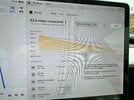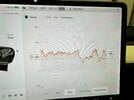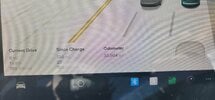I bought a used 2019 M3 LR this winter and took it on its first longer drive today. The car is in very good condition - there is nothing 'wrong' with it that I know of. But I was a bit surprised at the battery consumption. Basically I got about 170 miles of range on a car that was charged at 95% and said it would go 280-ish miles.
It wasn't a best case scenario - temp was about 35 degrees F., it was windy, it was all highway miles, mostly at 70 or 75mph. I also don't have wheel covers on the wheels. Tire pressure is fine though - 45psi all the way around.
Attached is a picture of the energy consumption charge from the car - basically you can see I was consuming more energy from start to finish through the whole trip. This was only one leg of the trip since I had to stop to charge, but the whole thing was this way.
Just wondering if this is 'normal' - does running near freezing really impact battery performance that much? I know it matters SOME, but I thought it got worse as you got colder, and it wasn't really terrible until you got down near zero - for some reason I didn't think 35 degrees F would matter much.
Or, any ideas on what else would be such a big drag?
Thanks! I love the car by the way - glad to be a part of the Tesla community!
It wasn't a best case scenario - temp was about 35 degrees F., it was windy, it was all highway miles, mostly at 70 or 75mph. I also don't have wheel covers on the wheels. Tire pressure is fine though - 45psi all the way around.
Attached is a picture of the energy consumption charge from the car - basically you can see I was consuming more energy from start to finish through the whole trip. This was only one leg of the trip since I had to stop to charge, but the whole thing was this way.
Just wondering if this is 'normal' - does running near freezing really impact battery performance that much? I know it matters SOME, but I thought it got worse as you got colder, and it wasn't really terrible until you got down near zero - for some reason I didn't think 35 degrees F would matter much.
Or, any ideas on what else would be such a big drag?
Thanks! I love the car by the way - glad to be a part of the Tesla community!





